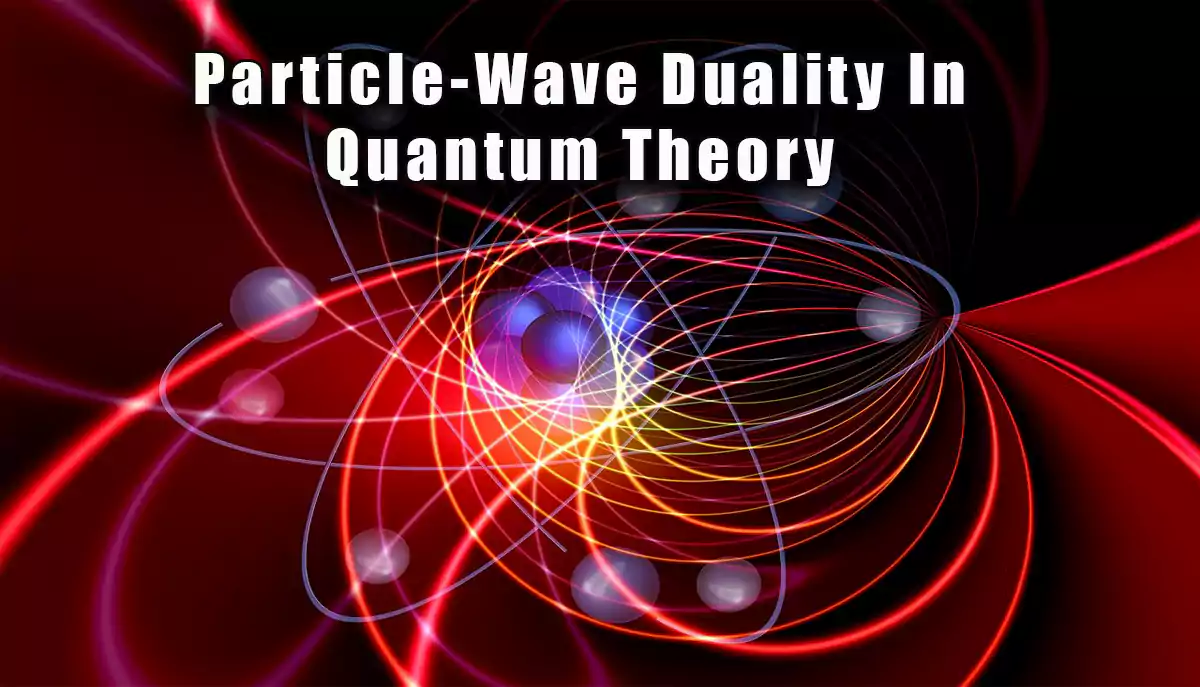The concept of particle-wave duality is one of the most important in quantum theory. It describes how quantum objects behave. This duality means that particles, like photons and electrons, can behave in two different ways based on the conditions of the experiment. Quantum mechanics has conducted extensive research and experimentation to understand the interaction between these two natures.
A Quantum Theory Both Particle And Wave At The Same Time
The idea of wave-particle duality is central to quantum theory. It says that particles have qualities that are both like waves and like particles. Several tests, like the double-slit experiment, show this duality. In this experiment, particles such as electrons exhibit interference patterns that are typical of waves. According to the De Broglie theory, matter, like electrons, can behave like waves, which reinforces this idea. Classical physics doesn’t explain this dual state of matter.
Diffraction experiments with electrons and neutrons have shown that particles do behave like waves. The wave-particle duality principle is important for understanding how matter behaves at the quantum level, where particles can behave like localized particles while also acting like waves. This makes it difficult to understand what matter is in the quantum world.
Wave Nature of Particles
A basic idea in quantum theory is that particles behave like waves. According to the De Broglie theory, particles, especially subatomic particles such as electrons, can behave like waves. This behaviour is described by wave functions, which show the probability amplitudes of finding a particle at a specific location. The Schrodinger equation controls how these wave functions behave and gives us a way to think mathematically about how particles behave as waves.
Particle Nature of Waves
Waves, on the other hand, can behave like particles in quantum theory. For example, photons, which are light particles, behave like particles in the photoelectric effect and other processes. This duality enables the breakdown of waves into individual energy packets that function similarly to particles.
Superposition and Interference
The idea of wave-particle duality has important effects, including overlap and interference. Interference patterns happen when more than two waves cross each other. The waves can join in a way that is either helpful or harmful. Experiments such as the double-slit experiment demonstrate this behavior, in which particles exhibit interference patterns that are typical of waves.
Observing the Wave-Particle Duality
Electron diffraction and the double-slit experiment are two experiments that have strongly supported the idea that matter is both waves and particles. These tests demonstrate that particles can bend and refract like waves, displaying interference patterns. This proves that matter has two different forms at the quantum level.
Conclusion
In the end, the fact that particle and wave traits exist at the same time in quantum theory goes against traditional ideas in physics. Being able to see waves and particles at the same time shows how complicated quantum entities are and how poorly classical physics can describe how they behave. By accepting this duality, scientists have made significant progress in understanding the complex workings of the quantum world. This has led to many important discoveries and technological advances.
FAQs
What is quantum particle and wave?
In quantum theory, particles like electrons can behave like waves. This is called wave-particle duality. This idea says that particles have properties of both particles and waves, which goes against the basic ideas of physics.
What are the particles in quantum theory?
Particles in quantum theory are basic building blocks of matter like electrons, protons, and neutrons. At the quantum level, these particles behave in unique ways, showing traits that are both particle-like and wave-like.
What is the particle theory and wave theory?
In quantum physics, particle theory says that matter is made up of separate particles that have qualities that are specific to their location. Wave theory, on the other hand, uses wave functions to explain events by showing how likely it is to find particles in certain places.
What is the difference between wave and particle?
The main difference between waves and particles is how they behave. Waves have properties like interference and diffraction, while particles have properties that are specific to a certain area and can be quantized into separate energy groups.
Join our WhatsApp Group for latest update notification
You May Also Like :
- How Mixed Reality Transcends Augmented Reality
- Exploring Astra Lumina: An Immersive Light and Sound Experience in Seattle
- NASA Outdated Supercomputers Cause Mission Delays, Inspector General Report Reveals
- MIT Researchers Achieve Breakthrough in Room-Temperature Magnet Control
- Quantum Computing and Networking are set to revolutionize cryptography.
- Exploring OpenAI Potential Leap into Quantum Computing
- Empowering Mobility: Unveiling the Magic of Quantum Electric Chairs
- Understanding The Particle and Wave Duality In Quantum Theory
- Maximizing Online Visibility: The Power of Effective SEO Strategies
- The Evolution and Significance of Web Development
- 10 Benefits of Artificial Intelligence In Healthcare: Transforming Patient Care (2024)
- What Is Meant By Applied Quantum Computing?
- What’s The Score?
- Windows 11 Upgrade (23H2) On Unsupported Hardware: A Comprehensive Guide
